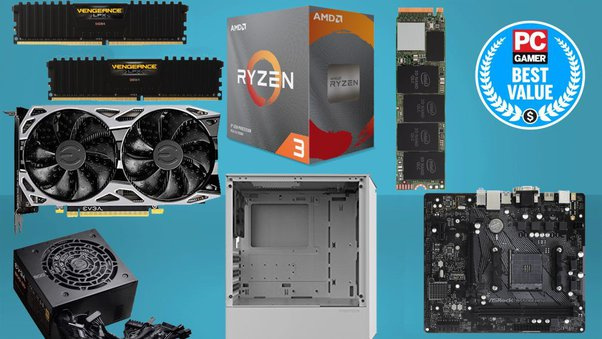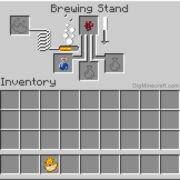Building a PC can be exciting and rewarding, but the cost of components is often a major barrier for many enthusiasts. Fortunately, there are ways to mitigate this obstacle and possibly even secure certain parts for free. The key lies in knowing where to look and how to take advantage of various opportunities that many overlook.

Participate in Giveaways
Giveaways and contests can be a goldmine for snagging free PC parts. Often sponsored by tech companies or influencers looking to promote their brand, these can range from smaller items like fans and memory sticks to entire high-end graphics cards or CPUs.
Detailed Steps:
- Research: Start by searching for tech-related giveaways online. Look at technology forums, social media platforms, Reddit, and even the websites of major PC component manufacturers.
- Follow Brands on Social Media: Many brands post giveaways on their Twitter, Instagram, or Facebook pages. Follow your favorite tech companies to stay updated on these opportunities.
- Enter Contests: Follow the instructions given by the contest organizers carefully. This usually involves tasks like liking, sharing, or commenting on a post.
- Stay Persistent: Enter as many giveaways as you safely can to increase your chances but beware of any potential scams or giveaways that require sensitive personal information.
Summary:
Giveaways can be an unpredictable but straightforward method of acquiring free PC parts. While participation is free and simple, there is a significant element of luck involved, and winning isn’t guaranteed.
Recycle Old PCs
Old computers, often thought useless, can be a surprising source of free parts. People frequently dispose of or sell their old PCs for a token amount, not knowing that many components are still usable.
Detailed Steps:
- Locate Old PCs: Look for advertisements on local classifieds, social media marketplace posts, or auction sites where people might be giving away or selling old PCs at a very low cost.
- Assess the Parts: Check the condition of the components. Some parts like hard drives, power supplies, or even RAM can often be salvaged.
- Remove Components: Carefully disassemble the PC and extract the parts that are in good working condition.
- Test the Parts: Before incorporating them into your build, test each component to ensure it functions properly.
Summary:
Recycling parts from old PCs can be cost-effective and environmentally friendly. However, this solution may require some technical know-how, and compatibility with new systems could be an issue.
Educational Programs
Certain manufacturers and organizations offer educational programs that provide free or discounted PC parts to students and educators working on tech-related projects.
Detailed Steps:
- Eligibility Check: Ensure you or your institution qualifies for these programs by reviewing the criteria provided by the manufacturer.
- Application: Fill out the application form, which may include details of your educational project and how the parts will be used.
- Wait for Approval: After submission, wait for the response from the program organizers.
- Receive Parts: If approved, you’ll receive the parts directly from the manufacturer or through an educational intermediary.
Summary:
Educational programs are an excellent avenue for those who qualify, offering not just free parts but also support for learning and innovation. Accessibility is limited, however, and not open to the general public.
Loyalty Programs
Many PC hardware retailers have loyalty programs that reward regular purchases with points or credits that can eventually be exchanged for products.
Detailed Steps:
- Sign Up: Register for loyalty programs at your preferred tech retailers.
- Make Purchases: As you buy PC parts or other items, accumulate points or credits as per the program’s structure.
- Redeem Rewards: Once you have enough points, redeem them for free PC parts or discounts on more expensive pieces.
Summary:
While this method requires initial spending, it can pay off over time if you’re a frequent buyer. The downside is that this method isn’t immediate and requires patience.
Sign Up for Beta Testing
Companies often need users to test new components or products and provide feedback. In return, testers may receive these parts for free or at a steep discount.
Detailed Steps:
- Find Beta Testing Opportunities: Keep an eye on tech forums and company announcements for calls for beta testers.
- Apply: Submit your application, typically detailing your technical background and why you’d be a great tester.
- Participate Actively: If chosen, test the product thoroughly and provide detailed feedback as requested.
- Keep the Parts: Often, beta testers are allowed to keep the products they test.
Summary:
Beta testing can get you the latest tech for free, but it comes with the responsibility of detailed testing and feedback. It’s also not a guaranteed way to receive parts as opportunities are limited and selective.
Repair Broken Parts
Sometimes people throw away or sell broken parts for next to nothing. A tech-savvy person might be able to repair these parts and get them working again.
Detailed Steps:
- Look for Broken Parts: Search online marketplaces for listings of defective PC parts being thrown out or sold cheaply.
- Evaluate Repairability: Assess whether the broken part is something you can feasibly repair.
- Attempt Repairs: Using your technical know-how, attempt to fix the part.
- Test Thoroughly: Make sure the repaired part is fully functional before use.
Summary:
Repairing broken parts can be a gratifying and cheap solution. However, it requires technical skills, and there’s always a risk the part cannot be fixed.
Freecycle and Free Sharing Platforms
Websites like Freecycle and local giveaway groups on social media are great places for finding free stuff, including PC parts.
Detailed Steps:
- Join Free Sharing Communities: Sign up for websites like Freecycle or local Facebook groups dedicated to free sharing.
- Monitor Listings: Keep an eye on posts that offer free PC parts.
- Communicate Promptly: If parts become available, respond quickly to claim them.
- Arrange Pickup: Coordinate with the giver for a safe and convenient pickup.
Summary:
This method can offer truly free parts and promotes a communal spirit. Supply can be sporadic, and competition for parts can be high.
Volunteer or Intern at Computer Shops
Some shops may offer parts as compensation for volunteer work or internships. This can also be an invaluable learning experience.
Detailed Steps:
- Inquire at Local Shops: Look for local computer repair shops or small tech businesses that might be interested in such arrangements.
- Propose a Trade: Offer your time and labor for a chance to learn and possibly earn spare parts.
- Negotiate Terms: If they agree, discuss how many hours of work will equate to what type of parts.
- Fulfill Your Commitment: Provide valuable assistance to earn your keep.
Summary:
Volunteering provides practical experience and could lead to free parts or valuable discounts. This, however, is not a purely free option, as you must trade your time and effort.
Attend Tech Events or Trade Shows
Tech events, conferences, and trade shows often have giveaways, contests, or even parts discarded after demonstrations.
Detailed Steps:
- Research Events: Look up tech events or trade shows happening in your area.
- Register: Some events might be free, while others could charge an entry fee. Determine if the potential benefits outweigh any costs involved.
- Network: Be sociable at the event; talking to exhibitors can lead to opportunities to acquire parts.
- Lookout for Giveaways: Attend demonstrations and register for any raffles or contests for free parts.
Summary:
Attending tech events can open doors to networking and free parts through giveaways. Travel and entrance fees can present additional costs which should be taken into account.
Offer to Dispose of E-Waste for Companies
Companies often upgrade their systems and need to dispose of older parts which can still be quite usable.
Detailed Steps:
- Contact Local Businesses: Offer to take their old computers or parts off their hands for free, saving them the trouble of proper disposal.
- Coordinate with IT Departments: Sometimes, making a connection with someone in the company’s IT department can lead to acquiring parts when they upgrade systems.
- Dispose Responsibly: Ensure you properly recycle what you can’t use and comply with all e-waste disposal laws and regulations.
Summary:
This method can yield useful parts while helping companies deal with e-waste. It’s unpredictable and depends on timing, plus you must be prepared to deal with true waste responsibly.
Learn to DIY with Inexpensive or Alternative Materials
Instead of looking for traditional parts, consider learning to make or repurpose certain components yourself—like cases or cooling systems—from inexpensive or alternative materials.
Detailed Steps:
- Research DIY Projects: Look online for tutorials on how to create your own PC parts from cheap or free materials.
- Gather Materials: Once you have a project in mind, collect the needed materials—often found for free or at low cost.
- Construct and Test: Carefully follow the DIY instructions to build your part, then test it to ensure it works with your PC.
Summary:
DIY projects can be rewarding and provide custom solutions. However, they can be time-consuming and may not always deliver the functionality or aesthetics of traditional parts.
In conclusion, acquiring free PC parts requires a blend of creativity, resourcefulness, and patience. From leveraging eco-friendly recycling options to participating in community-driven platforms and contests, there are various strategies to work around a tight budget. While you may not always find exactly what you’re looking for, and not every avenue will pan out, taking advantage of these methods can effectively lower costs and may even give you access to parts you otherwise wouldn’t afford. Always remain mindful of potential scams and remember that some free or low-cost options may require repairs or additional work before being viable for your build.
Frequently Asked Questions
Q: Is it safe to use secondhand PC parts?
A: Yes, it’s generally safe to use secondhand PC parts if they’re in good working condition. However, be aware that they might not perform as well as new parts and may not have a warranty.
Q: How can I ensure I’m not participating in a scam giveaway?
A: Research the giver’s reputation, look for past giveaway winners, be cautious of giveaways asking for unnecessary personal information, and never give out financial details.
Q: Can I really get high-end PC parts for free?
A: While it is possible, high-end parts for free are less common. Participating in giveaways or beta testing for high-end components might increase your chances, but it’s usually up to luck and opportunity.









